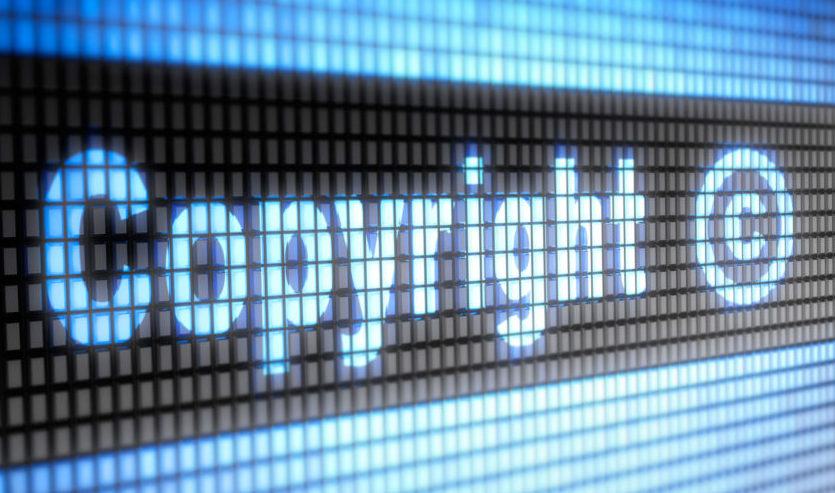Connections

M&E Journal: You Play It, You Pay For It
Story Highlights
By Tony Rodriguez, Digimarc –
Copyright: The primary form of protection that empowers and safeguards artistic creativity. Creators of “original works of authorship” are protected under the laws of the U.S., which provide legal rights for the material and usage. In the music business, the protection granted by copyright enables artists, composers, publishers and producers – anyone with a gift for music – to make a living doing what they enjoy.
At its heart, it promotes creativity as a valuable talent. For this reason, copyright is a respected statute. Persisting through time and adapting to changing technology, from vinyl records to CDs and digital files on the internet, however, copyright laws are regularly playing catch up.
The complexity of copyright law: Copyright infringement has been a dizzying topic full of complexity, and the associated challenges and legal issues have increased tenfold as technology advances. Remember the VCR? It was a device that dazzled the public when it made its debut and enabled consumers to record a show and watch it at their leisure. Yet, people in the U.S. nearly lost the right to record from their televisions because of copyright issues.
A landmark case in the 1980s, Universal Studios vs. Sony Corp. of America, posed the question of whether recording a television program with a VCR was “fair use” under copyright law. Sony argued that it was, Universal argued otherwise. In the end, the Supreme Court decided to allow home recording in a 5-4 vote.
Copyright infringement has long been a contentious topic of concern. This issue has only been compounded with the proliferation of digital devices that make it easier than ever to approach – and cross – the line of copyright infringement.
No other business is feeling the pain of copyright issues, challenges, and violations quite like the music industry. In the digital age, there is an enormous concern when DJs, producers, artists, songwriters, and more aren’t getting paid for their creative work.
Their music is being used unknowingly and without their consent. In essence, their production is being pirated and their livelihood threatened. The notion of, “you play it, you pay for it” is falling to the wayside as the task of identifying a song, categorizing ownership, serving a notice, and paying the fee has become a Herculean effort. Audio rights management is often regarded as the most complex and difficult topic in the music industry.
 As more people produce music and the internet further cements itself as the primary distribution mechanism, the world of music becomes increasingly crowded.
As more people produce music and the internet further cements itself as the primary distribution mechanism, the world of music becomes increasingly crowded.
This has led many music creators to devote time and energy to music licensing in an attempt to earn money through royalties. Film and TV producers, advertising agencies, game developers and Web developers are then able to legally license music for their specific needs.
However, now an artist’s work gets played across a vast array of distribution channels and media outlets, leading to greater opportunities for others to access and misappropriate the content. Without a consistent, enforceable tracing mechanism, the content owner loses control over their material and subsequent revenues from its use.
The “safe harbor” provision of the Digital Millennium Copyright Act further complicates audio rights management, allowing content delivery networks to stream any content that users upload until a copyright owner requests it to be taken down. These provisions enable content delivery networks to support music and attract an audience. However, it is being done without explicitly licensing the musical content as the content services are not required to ask permission or issue a notice of usage.
The challenge of identification
The digital music industry seems intent on making music more broadly available to consumers while placing a secondary consideration on building systems to enable publishers and songwriters to be paid. How is a music creator supposed to track all of this? How can they manage where their music is being used?
In addition to the sheer number of artists and media platforms, compositions are often truncated and used in snippets and/or mixed with sound effects and voice-overs, making identification even more challenging. Today, it’s more common for production music to be licensed by different suppliers, further complicating any sort of resolution for use. In totality, these issues create tremendous identification burdens for monitoring and reporting systems and further disenfranchise the creator and legitimate owner.
The questions to ask are how can the music industry reconcile the concerns, which at their core are hindering the growth of the industry itself? How does it ensure music and library rights holders can verify appropriate royalty accountings? How can this be done without introducing additional administrative burden, disrupting the production process, or compromising the listener experience?
Content intelligence for royalty verification
Fortunately, there are a number of players supporting digital identification technology as a means to address these challenges, with content intelligence that can provide royalty verification. As regularly discussed, music metadata is a key component as it includes a wealth of information that should persist alongside a music piece as it travels across the digital realm. When metadata is properly identifiable, it can help guarantee appropriate and timely compensation for the owners of musical content. However, being able to effectively identify, monitor and track the content through distribution and transcoding is critical for a long-term solution.
As the music business grows more diverse through the development and proliferation of new technology systems, the need for a solution that can monitor and automate the process of identifying song titles, ownership, and licensing authority to help with the dispersal of royalties grows more acute.
 Previously, the industry used a technique known as “audio fingerprinting” in an attempt to automate tracking and royalty verification. Like image recognition, music signals are matched against the waveform within large reference databases.
Previously, the industry used a technique known as “audio fingerprinting” in an attempt to automate tracking and royalty verification. Like image recognition, music signals are matched against the waveform within large reference databases.
There are systemic problems in this approach used alone that can result in false positives and missed detections.
With a low success rate in detecting music cues shorter than five seconds, misidentification due to misled retitling or sampling, and the difficulty with ambient noise, these systems are limited in their ability to differentiate similar content.
To solve the music industry’s vast supply chain problems, a more comprehensive and accurate solution needs to leverage the metadata- derived content intelligence and digital identification techniques to create new efficiencies in automation. This will allow content production companies to ensure artists, fans and copyright holders are all satisfied.
This level of digital identification could be achieved by leveraging inaudible digital codes that map to references and database records. Similar to the way that GS1 issues UPC barcodes (universal barcode identifiers) to help with the global identification of products, inaudible signaling could provide unique and unambiguous detection, thereby allowing unmatched monitoring.
The most advanced of these digital identities could be enhanced into audio and can endure typical file changes, such as format conversions or down mixing. While historically associated with some degradation in audio quality, prominent providers in the space have documented extremely minute alterations to the audio quality, inaudible to the human ear. Additionally, these types of digital identities are difficult to tamper with or remove from the file, providing both a unique ID and an added layer of security.
Unlike fingerprinting, advanced digital identification technology is deterministic. The deterministic nature of identification allows the ID in the track to be read directly versus probabilistically matched against an external database. This approach provides more accurate information and can more effectively authenticate track title, ownership, and license authority.
Using new forms of digital audio identification in addition to established fingerprinting approaches offers an exciting development for creators in the music industry, providing an exacting and future-proof method for artists and producers to gain the recognition and compensation they deserve. If the copying and distribution of people’s artistic creations continues without regard, the music industry will suffer, as artists of all shapes and sizes may not be able to make a livelihood with their musical creations.
If that happens, we all lose.
Click here to translate this article
Click here to download the complete .PDF version of this article
Click here to download the entire Spring 2016 M&E Journal









